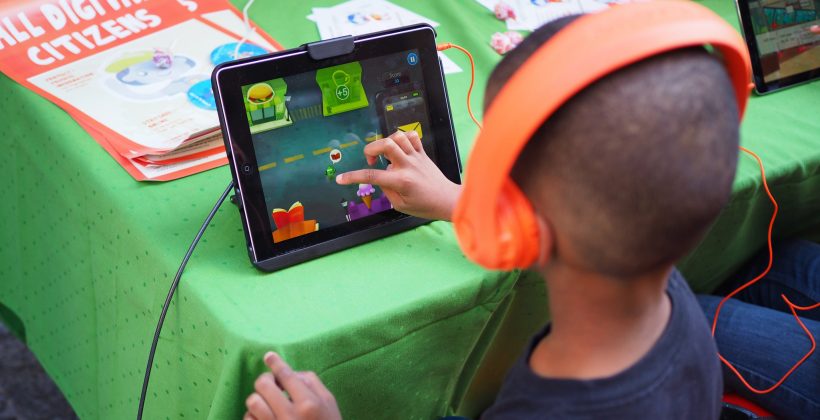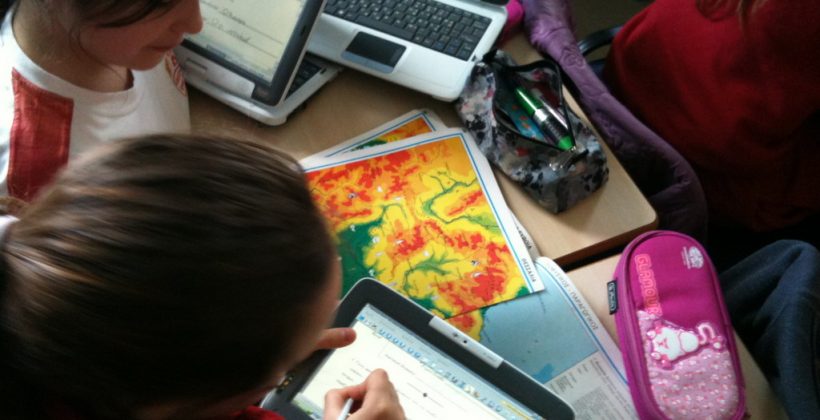Globally, schools have closed1, exams have been cancelled and children are being schooled at home. This adds to the millions of children out of school due to poverty, instability or conflict, and constitutes an unprecedented threat to a generation of learners. This has led to a swift reaction across the education sector.
The new reality of homeschooling
The first weeks of global school lockdowns have seen a huge pivot towards global actors allocating resources to supporting continued learning for newly out-of-school students. Donors such as LEGO2 or the Global Partnership for Education3 have provided substantial disbursements to help systems cope. In addition to this, a wide range of actors have collected, published and made easily available resources to support students and care-givers in coping with a new reality.

While this is admirable, what it highlights is how unprepared we are. The push for more integrated learning technology in the last decades has not yet provided a platform that can ease the transition to homeschooling. Distance learning has been the most rapidly implemented contingency, but the evidence isn’t yet available to say how effectively this works and risks leaving learners and teachers in low connectivity environments behind. Similarly, MOOCs (Massive Open Online Courses) and other network learning solutions have obvious limitations in their reliance on connectivity and digital literacy, and there are still notable problems in providing motivation and self-efficacy, particularly when it comes to teenagers. Independent learning opportunities are the most easily accessible, from brain training apps to YouTube videos, however, there hasn’t been enough thinking on how these should be used, and what is required to turn them from useful resources into a guided learning experience, leaving them as just one part of the puzzle.
Imagining a resilient future for education
While the current crisis will not be permanent, it will also not be the last of its kind. The data we have points to a future with more frequent pandemics, and, while improvements in public health responses may ameliorate the effects (following the example of South Korea, which averted any school closures), we should still be prepared. This presents a challenge for those funding and conducting research and evaluation.

The answer is a collaborative, whole-system approach to creating resilient systems that can blend technological innovations with human contact. Innovation should not be aimed at replacing schools, but rather providing solutions that are both supportive of schooling and can take its place to ensure curricular continuity in times of crisis. This entails the following points:
- Alongside facilitating innovation, it is important to push for better digital literacy and education of caregivers and teachers. While the younger generations globally are becoming better adapted to digital interactions, out-of-school learning requires buy-in and support from parents. Promoting crisis resilient systems means supporting parents and caregivers to play an active role in ensuring the continuity of learning, as well as the online safety of children.
- Support blended approaches before crises hit. A landscape analysis of ICT in conflict-affected education systems4 recommends that integrating some distance learning options into mainstream education means that systems can be adaptive in times of crisis. These should rely on locally available technology to allow for a smooth transition in times of crisis. Again, blended approaches need to build on what teachers, parents and caregivers are already doing to allow for as much continuity as possible.
- Explore cross-sectoral planning and collaboration. While the health sector has long been able to quickly mobilise crisis response teams (building on the experience of previous epidemics), no such systems exist for the education sector. The education sector should learn from, and collaborate with the health sector (and other sectors) to develop global crisis response teams to support the development, mobilisation and funding of alternative provisions (including tech-based solutions) in crises. In addition, partnerships should be brokered with internet service providers, social networks and other private sector agencies to promote integrated solutions5.
Turning mitigation into learning
What has been done so far in terms of pushing research, extra funding and a focus on digital resources is all valuable, and will hopefully have a catalysing effect in improving risk readiness in global education planning. Furthermore, an integrated long-term approach is needed, which looks beyond piloting innovation to system resilience and towards truly blended learning options built on deep collaboration between funders, innovators and governments. This will ensure that innovations are effectively scaled up and become part of cohesive, resilient and adaptive systems.
Our role as knowledge brokers in this process is to be flexible, adaptive and supportive. We should look at our programs to see how evaluation and research can provide insights and ensure that we are learning from this crisis and supporting a better prepared and more resilient future. While this crisis shouldn’t be seen as an opportunity for trialling risky innovations on vulnerable populations, it is a valuable opportunity to learn. A huge range of innovations are being implemented across the world, both at the state level, but also in re-allocating donor funding and resources. We should be doing our best to turn mitigation into learning and focus on producing data which can help us be ready for the next crisis.
Check out a range of useful resources:
USAID Guidelines (EnCompass and MSI)
UNESCO’s comprehensive list of distance learning resources
World Education List of Edtech Resources
LEGO’s Let’s Build Together Platform
Education Above All (EAA) Foundation List of Resources
A range of blogs, resources and opportunities from the European Commission’s Electronic Platform for Adult Learning in Europe (EPALE)
Guidelines for teachers from Google on Distance Instruction
EdTech Hub’s List of Key Research Papers
DFID/Jigsaw Consulting: Mapping Edtech Innovations

